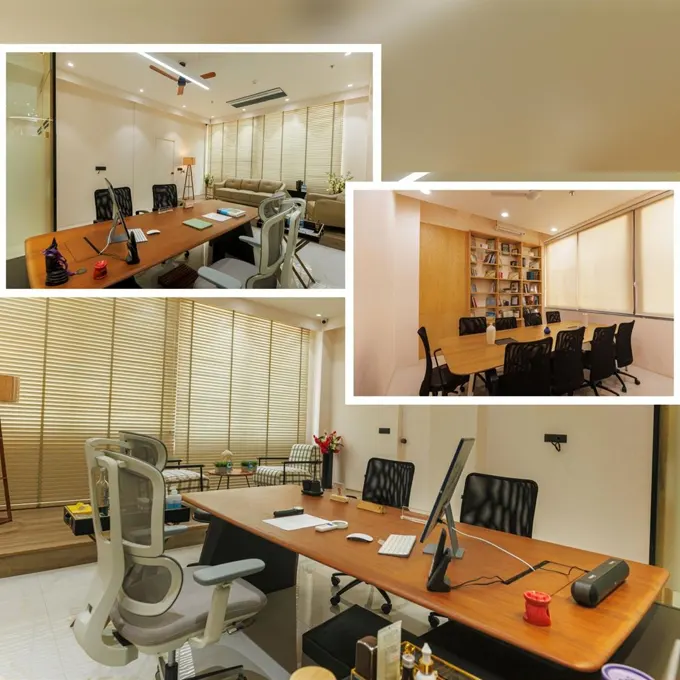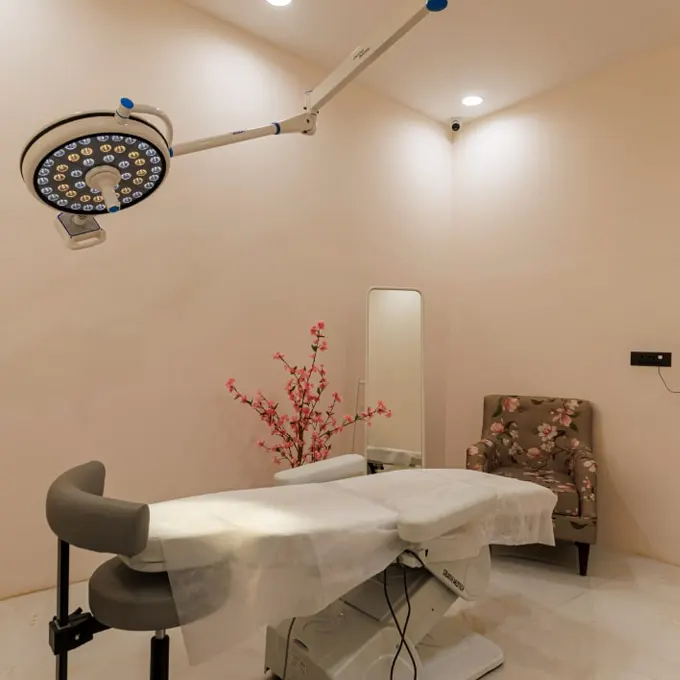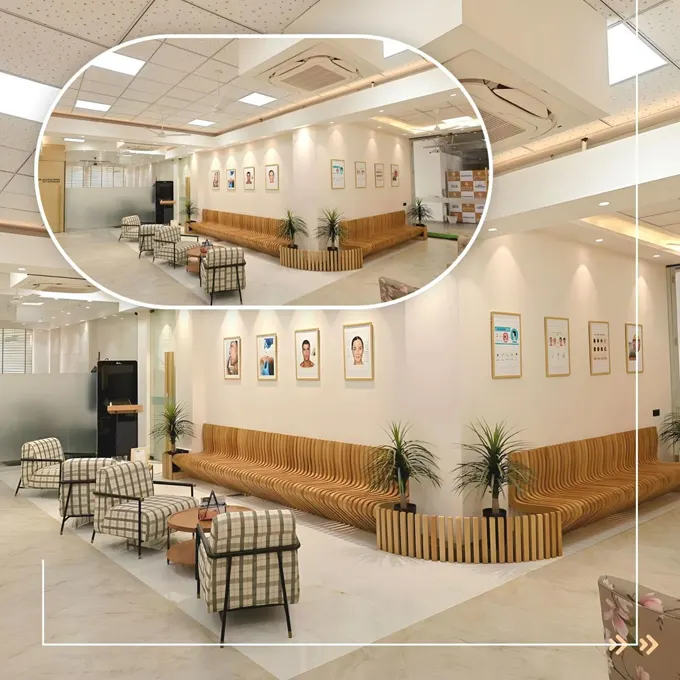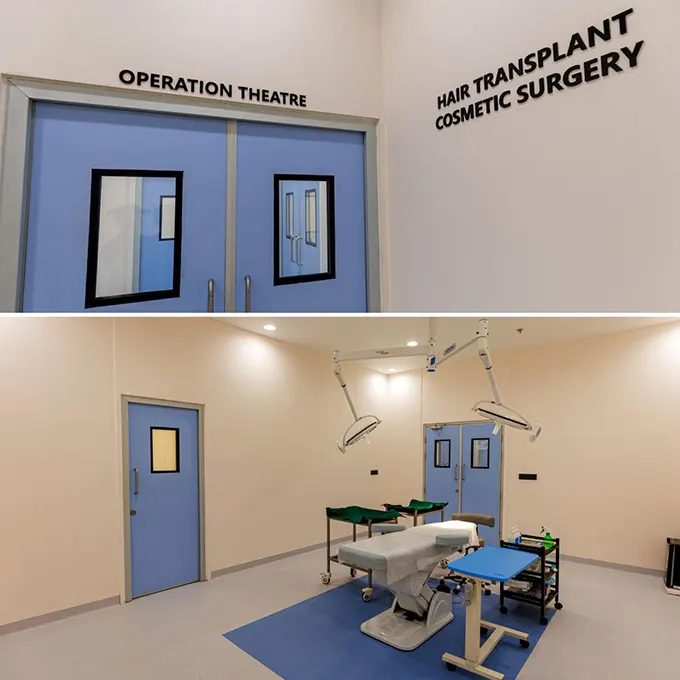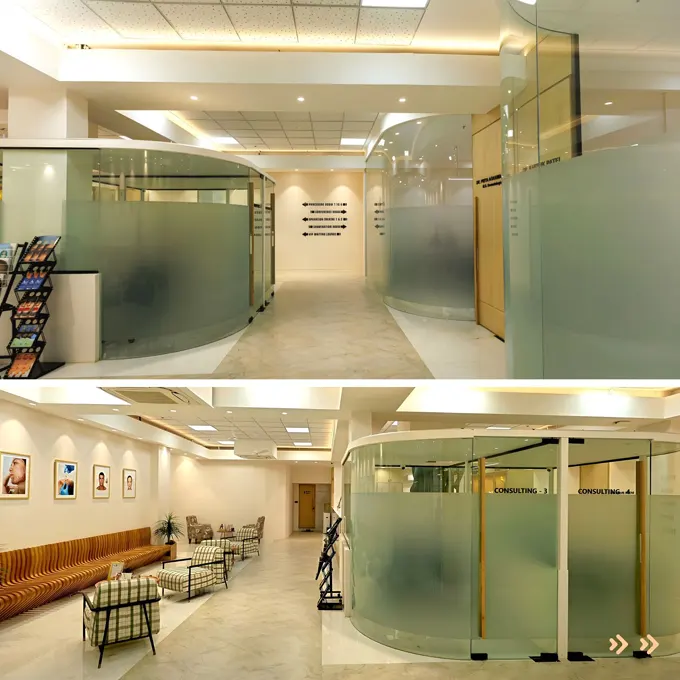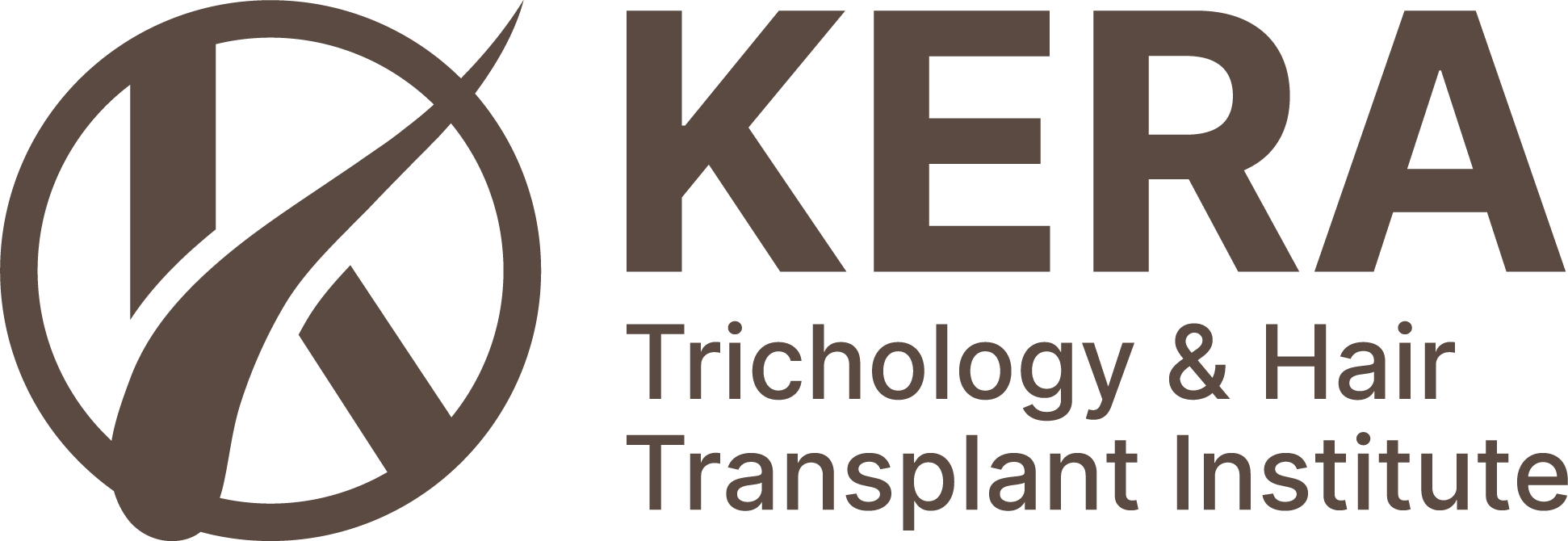The Advanced FUE Hair Transplant (DHI Technique) is a revolutionary approach to hair restoration, offering permanent and natural-looking results for individuals suffering from hair thinning or loss. This technique addresses the limitations of older hair transplant methods, providing a minimally invasive, highly effective solution with minimal downtime and superior outcomes. Here’s an in-depth look at the key features and benefits of this advanced technique:
Key Features of Advanced FUE Hair Transplant

1. Permanent, Natural Results
Seamless Integration: Advanced FUE ensures natural results that blend perfectly with your existing hair…

2. Minimal Disruption to Lifestyle
Quick Recovery: One of the most significant advantages of Advanced FUE is the minimal downtime…

3. Safe, Painless Procedure
Local Anesthesia: The procedure is carried out under local anesthesia, ensuring that the process…

4. No Visible Scarring
Scar-Free Results: Unlike older hair transplant methods like FUT (Follicular Unit Transplantation)…

5. Versatility
Multiple Applications: Advanced FUE is a versatile technique that can be applied not only to…

6. Unshaven FUE Option
Complete Discretion: For those who prefer discretion, Unshaven FUE is available. This allows the transplant…

7. Exprt Care by Dr. Kautuk Patel
All Advanced FUE procedures at Kera Trichology and Hair Transplant Institute are performed or closely…
The Procedure Step-by-Step
1
Consultation and Planning: During your initial consultation, a detailed evaluation is conducted to assess your hair loss pattern and design a custom treatment plan.
2
Follicle Extraction: Hair follicles are carefully extracted one by one from the donor area using advanced FUE tools.
3
Implantation: With the DHI technique, follicles are immediately implanted into the recipient area using a sharp implanter, allowing for precise depth, angle, and direction. This technique offers versatility in application, making it suitable for restoring hair on the scalp, beard, and eyebrows.
4
Post-Treatment Care: Comprehensive aftercare ensures a smooth recovery and optimal results, with visible growth starting within a few months.

Benefits of Advanced FUE Technique
No Visible Scarring: The minimally invasive nature ensures no linear scars, even in short hairstyles.
Quick Recovery: Resume normal activities within a few days.
Permanent Results: Transplanted hair is resistant to hair loss and will continue to grow naturally.
Natural Appearance: Restores your hairline and density with a completely natural look.
Advanced FUE (DHI Technique) is an innovative and effective hair transplant solution that delivers natural, long-lasting results with minimal downtime. By using the latest techniques and tools, Kera ensures that each patient receives the highest quality care and achieves optimal outcomes. Whether you’re looking for a fuller hairline, thicker scalp, or more defined facial hair, Advanced FUE offers a versatile, safe, and reliable solution tailored to your needs.

Advanced techniques for precise, natural, and lasting hair restoration
1
Consultation
During initial consultation a detailed evaluation is conducted to assess your hair loss pattern and design a custom treatment plan.
2
Hairline Design
A good hairline can truly be a signature of a skilled surgeon.The hairline is indeed crucial for achieving a natural, aesthetically pleasing result. By incorporating both micro and macro irregularities into the hairline design, surgeons can create a look that mimics the natural growth pattern of hair, rather than a straight, artificial line.
3
Extraction
The process begins with the extraction of healthy hair follicles from the donor area (typically the back or sides of the scalp). This is done using a precise, minimally invasive technique, which involves using small, circular punches. The procedure is performed under local anesthesia, ensuring that the patient remains comfortable throughout the process.
4
Implantation
Unlike traditional hair transplants, which involve creating channels or incisions first, Advanced FUE (DHI)uses a sharp implanter pen to directly insert the harvested hair follicles into the recipient area. This allows the surgeon to control the angle, depth, and direction of each follicle, ensuring a natural look.
5
Post Procedure Care
Comprehensive aftercare ensures a smooth recovery and optional results with Visible growth starting within a few months.
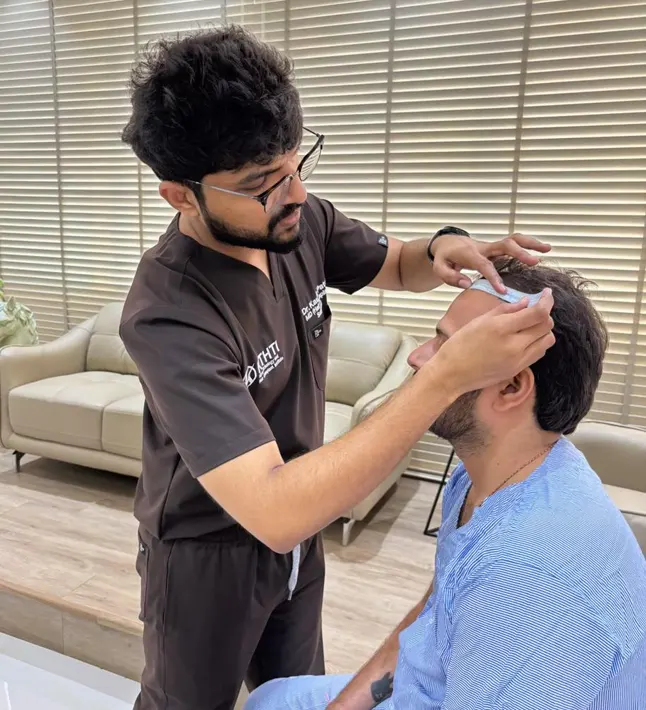
Key Features of Advanced FUE Hair Transplant
1
Expertise of Dr Kautuk Patel
With years of experience in hair restoration and a reputation for precision, Dr Patel ensures the best possible outcomes for every patient. His expertise in Advanced FUE and DHI techniques provides a level of skill and care that sets Kera apart.
2
State-of-the-Art Technology
Kera uses the latest, most advanced equipment and techniques in hair restoration, ensuring superior results with minimal downtime and discomfort.
3
Personalized Care
Kera’s approach is highly personalized. Each patient receives a treatment plan tailored to their unique needs and aesthetic goals, ensuring that the results look natural and meet expectations
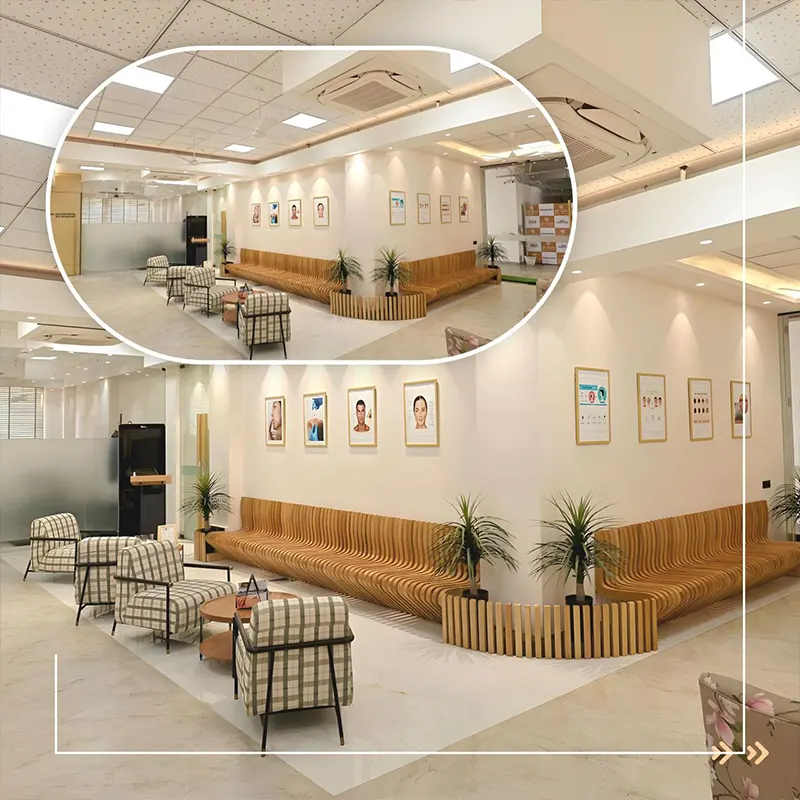
Advantages of Hair Transplantation
DHI (Direct Hair Implantation) is a state-of-the-art hair transplant method that offers several advantages over traditional techniques. It combines precision, safety, and natural results, making it one of the most advanced and effective methods available. Here are the key benefits:
1
Precision and Safety
Choi Pen Technology: The DHI method uses a specialized tool called the Choi pen, which allows for precise placement of hair follicles directly into the recipient area. This tool eliminates the need for incisions or cuts, ensuring a safe and controlled procedure.
2
Minimized Channel Creation
Unlike traditional methods where channels are created separately before implantation, DHI opens channels and implants follicles simultaneously. This minimizes the duration of the operation and reduces risks of complications.
3
Minimal to No Scarring
DHI leaves minimal to no scarring due to the sophisticated technique. Since no scalpel or sutures are used to open channels, the healing process is faster, and the risk of visible scarring is significantly reduced.
4
Faster Recovery
The non-invasive nature of DHI means that there is less trauma to the scalp, leading to a faster recovery time. Most patients can return to their normal activities within a short period after the procedure, with minimal discomfort and downtime.
5
High-Density Results
One of the standout features of DHI is the ability to implant hair follicles closer together, which results in higher hair density. This allows for fuller, thicker hair in areas where density was previously low or missing.
The natural growth pattern is maintained, providing a natural-looking result.
6
Complete Control Over Implantation
The surgeon has full control over the depth, direction, and angle of each implanted hair follicle. This precise control helps achieve the most natural hairline and overall aesthetic, as each follicle is placed in a way that mimics natural hair growth.
7
Long-Lasting Results
Since only the healthiest hair follicles are chosen for the procedure, DHI hair transplants provide durable, long-lasting results. These transplanted follicles continue to grow hair for many years, ensuring the success of the procedure.
8
No Linear Scar
Unlike traditional methods such as FUE (Follicular Unit Extraction) that can sometimes leave a linear scar, DHI does not leave any visible scarring. This makes it a highly desirable option for individuals who prefer to wear their hair short.
9
Minimized Risk of Follicle Damage
Because the hair follicles are implanted directly using the Choi pen, they experience minimal handling and damage. This reduces the chance of follicle trauma and improves the survival rate of transplanted hairs.
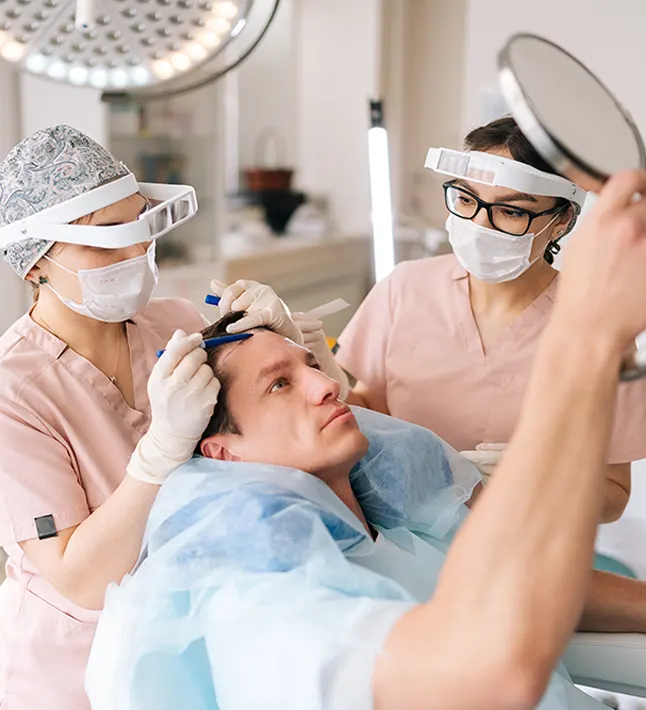
Post-Surgery Care for Lasting Results
1
When Can I Wash My Hair Normally After a Hair Transplant?
First 10 days: Be gentle with your scalp. Avoid direct water pressure on the
transplanted area and use lukewarm water (not too hot or cold).
After Day 10: Once the scabs start to fall off, usually around day 10, you can begin washing your hair more normally. Be gentle during the washing process, avoiding harsh scrubbing or rubbing.
2
How to Sleep After a Hair Transplant?
First Week: Sleep on your back with your head elevated. This helps avoid pressure on the
transplanted area and reduces the risk of graft displacement.
Avoid: Sleeping on your stomach or side, as this could cause friction or pressure on the grafts.
3
Can You Wear a Hat After a Hair Transplant?
10 Days Post-Transplant: Wait at least 10 days before wearing a soft hat. For helmets or tight hats, wait around 4 weeks to ensure your grafts are securely settled.
4
How Long Should You Avoid Sun Exposure After a Hair Transplant?
First 2 Weeks: Your scalp will be more sensitive to sunlight and more prone to sunburn. Avoid direct sun exposure for at least 2 weeks to protect your healing scalp.
5
Is Sweating Bad After a Hair Transplant?
Avoid Heavy Sweating: While sweating won’t affect hair graft survival, it can create a breeding ground for infections and irritation. Avoid strenuous workouts, saunas, and steam rooms for at least a month.
6
Can I Consume Alcohol After a Hair Transplant?
Wait 1–2 Weeks: Alcohol can affect blood circulation and hinder the healing process, so it’s best to avoid it for at least a week, or until your scalp has fully healed. It’s best to avoid it for at least a week, or until your scalp has fully healed.
7
How Long After a Hair Transplant Can I Drink Coffee?
1-2 Days: Caffeine can increase the risk of bleeding. It’s advisable to avoid coffee for at least 1-2 days’ post-surgery.
8
How Long After a Hair Transplant Can I Get a Haircut?
1 Month: Wait for at least 4 weeks before getting a haircut. By then, your transplanted Hair follicles should be securely embedded in the scalp.
9
Can I Use Hair Spray After a Hair Transplant?
Wait 3 Months: It’s recommended to avoid styling products like hair spray for at least 3 months, as these can irritate your sensitive scalp and potentially affect the grafts.
10
How Long After a Hair Transplant Can I Start Working Out?
1 Month: Avoid strenuous activities for at least a month. High-intensity workouts can cause excessive sweating, which may increase the risk of inflammation and infection.
11
How Long After the Hair Transplant Can I Go Back to Work?
Depends on Your Recovery: Many patients return to work after 2-3 days, but it depends on how you feel. You may want to take a little extra time for rest, especially during the initial days when swelling and discomfort are more common.
12
Can I Have Sex After a Hair Transplant?
Wait 10 Days: Sexual activity can cause increased blood flow to the scalp and sweating, both of which can impact the healing process. Avoid sex for about 10 days post-transplant.
13
When Can I Start Smoking After a Hair Transplant?
Wait 2-3 Days: Smoking impairs blood circulation, which can reduce the oxygen supply to your hair follicles and affect graft survival. It’s best to wait at least 2-3 days, but ideally longer, before resuming smoking.
14
When Can I Start PRP Treatments After a Hair Transplant?
10 Days Post-Surgery: Platelet-Rich Plasma (PRP) treatments can help enhance the results of your hair transplant. However, you should wait at least 10 days before starting PRP sessions, and it’s important to consult with your surgeon first.
15
Can I Fly After a Hair Transplant?
Yes: There are no restrictions on flying after a hair transplant, but make sure to protect your scalp from sun exposure during the flight.
16
When Can I Scratch My Head After a Hair Transplant?
Wait 1 Month: Scratching can dislodge transplanted hair follicles. It’s crucial to avoid scratching until the grafts are fully set, usually about a month after the procedure.
17
Can I Massage My Head After a Hair Transplant?
10-12 Days Post-Transplant: Massaging can improve blood circulation, but you should wait at least 10-12 days before gently massaging your scalp to avoid disrupting the grafts.
18
Should I Remove Scabs After a Hair Transplant?
Avoid Picking Scabs: Scabs are a natural part of the healing process. Do not attempt to remove them until at least 10 days’ post-transplant, as doing so prematurely can damage the hair grafts.
By adhering to these aftercare tips, you’ll help ensure that your hair transplant heals properly and delivers the best possible results. If you’re ever unsure about anything during your recovery, don’t hesitate to consult with your surgeon for personalized advice.
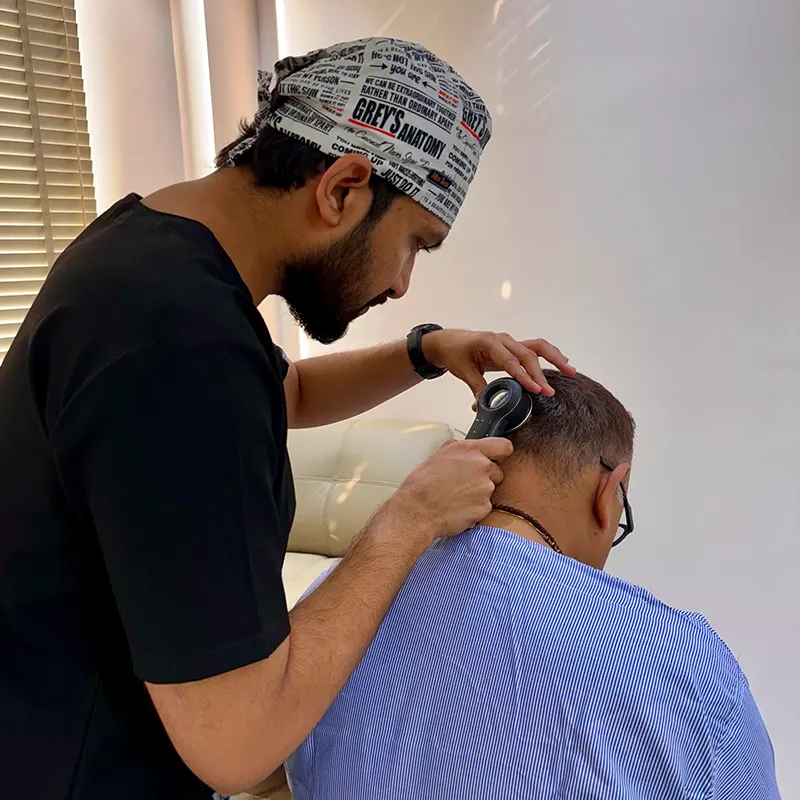
Summary
DHI hair transplant is the most advanced and refined hair restoration technique available today. Its ability to provide precise implantation, minimal scarring, fast recovery, and natural-looking results makes it a highly effective and preferred option for many patients. Additionally, the method’s focus on using the healthiest hair follicles leads to long-lasting results, ensuring patient satisfaction for years to come.
Conclusion
Advanced FUE Hair Transplant (DHI TECHNIQUE) is a cutting-edge solution for those suffering from hair loss or thinning. Offering natural, permanent results with minimal recovery time and no visible scarring, this technique has revolutionized hair restoration.
Whether you’re seeking to restore hair on your scalp, beard, or eyebrows, Advanced FUE provides a safe, effective, and discreet solution, all under the expertise of Dr. Kautuk Patel.
Other Indication of advanced FUE (DHI TECHNIQUE):
1. Moustache | Beard Transplant
2. Eyebrow Transplant
3. Body Hair Transplant
4. Hairline correction
5. Female Hair Transplant
Ready to Begin Your Transformation?
Discover how the Advanced FUE (DHI) technique can restore your confidence and transform your appearance. Schedule a consultation with our experts today!
What Our Clients Say About KERA
At KERA, client satisfaction is our top priority. Hear from those who have transformed their hair and confidence with our expert care and advanced treatments.
SR Ravi
Nikhil Patidar
Apurva Gurjar
Jahanvi Kapadiya
Patel Himanshu

FAQs
Explore our FAQs to learn more about hair transplants, advanced treatments, and how KERA can help you achieve your hair restoration goals.
The procedure typically takes between 4-8 hours, depending on the number of grafts being transplanted. Larger sessions may require multiple sittings, especially if the patient has extensive baldness.
A hair transplant is a surgical procedure where hair follicles are moved from a donor area (usually the back or sides of the scalp) to areas experiencing thinning or balding. This is done to restore hair density and improve the aesthetic appearance of the scalp.
Yes, women can undergo hair transplant surgery. However, since women typically experience diffuse thinning rather than localized baldness, the procedure may be slightly different. An experienced surgeon will assess the cause of hair loss and determine if a transplant is suitable.
The cost of hair transplant majorly depends on the technique, expertise and where you get it done from. So there is no fixed cost of hair transplants. It is advised to consult your surgeon and let them evaluate your case.
Hair transplant is performed under local anesthesia so that you wouldn’t feel any pain during the treatment.
The best age for hair transplant is generally between 25 and 60 years old.
Yes, hair transplants look natural when done right with the latest techniques and an experienced surgeon.
The transplanted hair follicles are genetically programmed not to miniaturize, so the transplanted hair itself is permanent.
India has become a popular destination for hair transplants because of the relatively lower cost compared to many western countries and highly skilled and experienced hair transplant surgeons.
1. Growth Phase: Where the hair grows about 1-2cm for the first 4-6 weeks.
2. Temporary Shedding Phase: Where the grown implanted hair will start falling. This phase may last for about 3 months. You shouldn’t get worried in this phase. The hair will again come back.
3. Permanent Growth Phase: (6-9 months) Here all the fallen hair will again start growing. These hairs are normal hair with normal characteristics and will grow naturally.
Since PRP uses your own blood, the risk of allergic reaction or infection is low.
The procedure typically lasts between 30 to 60 minutes.
For conditions like hair loss, 3-4 sessions spaced 4-6 weeks apart may be recommended.
